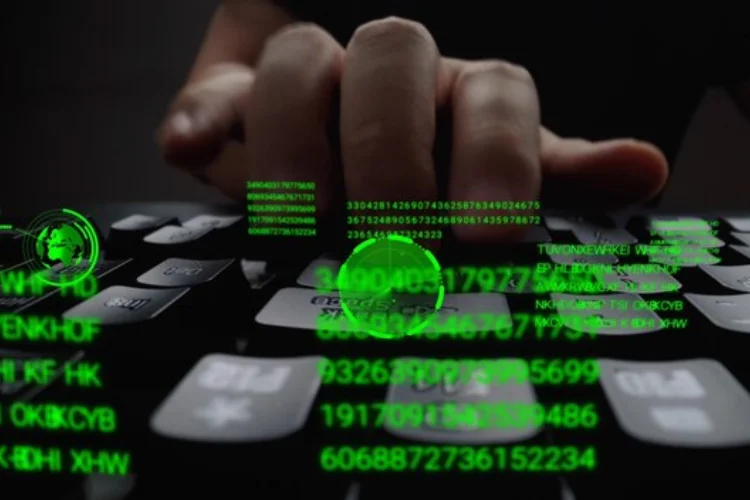What Is Two-Factor Authentication?
Security is a pertinent goal to enhance access controls against illegitimate activities. Businesses double up on security by protecting applications, software, and IT environments with two-factor authentication (2FA). It is the best way to play safe and verify the user’s identity for authentication.

Most internet users are familiar with text services based on the 2FA security method, where a security code is required for seamless login. The user provides the password and OTP to proceed further.
If you want to keep your sensitive data on the safe side, access control is inevitable. This article aims to reflect on the significance of two-factor authentication (2FA) and its related aspects to help you avoid the slippery slope in the digital world.
What is Authentication?
Table of Contents
Before you jumpstart the 2FA method, understand the value of authentication in the digital medium to limit your digital footprint. Authentication reflects on active access control. It is a significant component of the security process to verify the validity of the user, for who they claim to be.
For instance, travelers show their passports to immigration or customs agents to prove their identity. The scope of cybersecurity is wide and user identity verification comes in the direct ambit of authentication while logging into a service on the web, such as Gmail sign-in or signing-in on the Facebook app. Normally, it is executed through a verification code or question. As the user provides the login credentials including username and password, the service where you want to get in confirms the entered details to authenticate your activity.
Authentication Factors: A Comprehensive Guide
Authentication factors embody different tiers of identity verification processes. Explore some of the commonly utilized authentication factors for 2FA method include:
Possession: This factor defines the user holding some tangible material possession. This can be illustrated as a hardware key that can generate passcodes. A small cellular device can even receive the security codes.
Knowledge: The next is the knowledge factor where a user knows a piece of information that should be confined to the user only, such as a security password or the answer to an account security question.
Location: The location-based authentication tools like GPS are often used to limit access. They can be utilized to restrict authentication only to specific users located within a specified geographic area.
Biometric Data: Everybody knows fingerprints, retinal scans and face IDs are unique to every individual. These unique biological traits of every user can be employed for authentication needs. They are significantly used as a security key to restrict access to sensitive data.
Behavioral Factor: It involves the digital artefacts to validate the identity of the user based on the behavioral aspects. This authentication factor normally employs artificial intelligence to know the baseline for the user’s normal patterns. For instance, a user’s device IP address range, location, and even the normal typing speed.
The noteworthy point here is that requiring two steps or instances of the same authentication factor does not balance the scale of the 2FA method. For instance, a single password and a security-based question is still a single-factor authentication. Both of these instances pertain to the knowledge factor.
How Does Two-Factor Authentication Work?
Get a spongy detail, 2FA can work in multiple ways. Let’s understand its working pattern and learn about different types of 2FA.
- SMS 2FA: This factor validates the user’s identity by sharing a security passcode in the form of text to the user’s mobile phone device. This security code is mostly in numeric.
- TOTP 2FA: Another is the time-based Password that locally generates a key on the user’s device. It is a type of QR code that the user scans to create a series of numeric. The user needs to enter those numbers into the required application or website to gain access. These passcodes expire after a certain time.
- Push-Based 2FA: It provides an additional layer of security to SMS and TOTP 2FA. The push-based method helps to improve the user’s experience as it authenticates the user’s identity with multiple factors.
- WebAuthn: The Web Authentication API enables third parties to tap built-in features on devices and browsers, enabling users to authenticate robustly.
Why is 2FA Important?
If you want to secure your digital footprint without compromising data processing and its security, relying solely on passwords for apps and software protection is a dangerous ground. Passwords are vulnerable to being easily guessed, cracked, stolen, or leaked through intruders. Putting your trust in two-factor authentication can ensure effective access management, obstructing navigation for attackers. Before you take the next step, consider some potential reasons why 2FA is a much-needed security filter.
Reduces Phishing Risks: The 2FA technique better thwarts phishing threats by failing the tricks employed by attackers to manipulate users into revealing their passwords. Even in a situation where an attacker manages to crack or steal a password through a phishing site, not to worry about it. They still need to crack the second factor to access the account. It proves a great hindrance for hackers.
Counters Brute-Force Attacks: With the 2FA method, trying multiple combinations of passwords to guess the right one becomes the hard nut to crack for hackers. Brute force attack eventually becomes much more difficult. Even if by chance an attacker cracks your password, the second factor still stands as another fence to cross in their way.
Secures Valued Accounts: Vulnerable and highly valued accounts containing confidential information, such as banking details, email, or healthcare accounts, are normally core targets for cybercriminals. 2FA is the best remedy ensuring that only legitimate users can access these sensitive accounts. It reduces the likelihood of ransomware breaches, identity theft, and potential data breaches.
Barricades Password Theft: Suppose someone gains access to your security password through data breaches or social engineering, 2FA won’t allow them to succeed in their objective. Hackers would still need to crack the second factor to finally log into your account. This provides a powerful restraint against invalid access.
2FA vs MFA: Which is the More Secure Option?
Before you jumpstart to unlocking the most protected option for mobile security or desktop app, firstly, understand the slight difference between two-factor authentication and multi-factor authentication.
- Two-Factor Authentication: As the name states, two factors involve two security tiers to identify the user and validate the identity before providing access to the claimed account. The first factor is a password whereas the second factor is a significant addition in the form of a security code or secret questions with predefined answers. It ultimately makes it difficult for threat actors to crack the security tiers to access the vulnerable details.
- Multi-Factor Authentication: MFA is based on more than two authentication factors. It is an extra-protected user access management tool. Multi-factor authentication involves different types of security items and processes for uncrackable protection against baiting cybersecurity and other digital threats. In this security method, the user needs to provide complex pieces of evidence from different sources to prove the identity. This evidence can be passwords, biometric data, confirmation codes and even more.
In terms of higher security, MFA guarantees more security. Especially if authentication is required through different access points that aren’t available online (like a security token or key) and require a physical presence through GPS. In short, multi-factor authentication offers more checkpoints, making it nearly impossible for hackers to dodge the bullets. More data breaches may require the MFA security method.
In 2023, the strictly passed orders by FTC for the online alcohol seller Drizly to enforce the MFA method following a horrific breach incident that almost influenced 2.5 million customers.
In the process of making accounts secure, Two-Factor Authentication (2FA) is a critical step forward in digital security. It provides a significant barrier and ultimate protection against unauthorized access, impersonation, and data breaches. Individuals and organizations need to embrace 2FA as a primary security measure to shield sensitive information against cybercrimes.
Facing IT Challenges in Chicago?
Schedule a consultation with our expert team to get the help you need!
Related Articles

Risk-free use of Artificial Intelligence in Cybersecurity

Secure Supply Chains with Disaster Recovery Solutions


